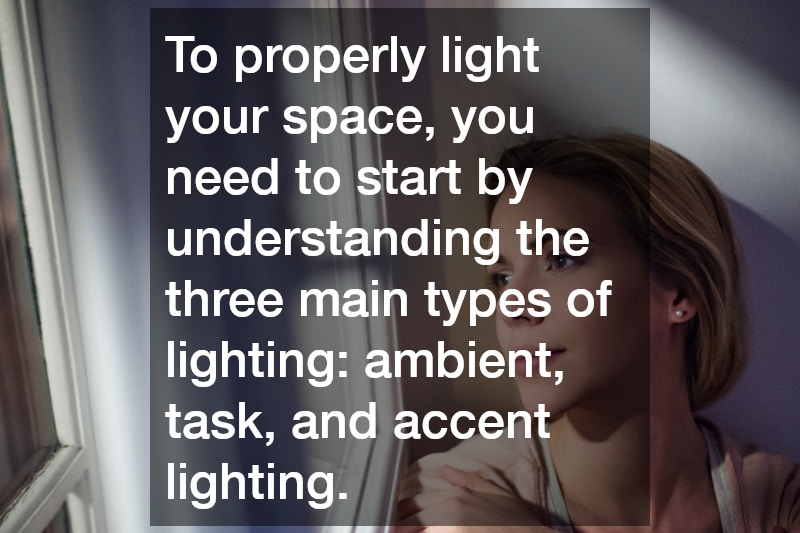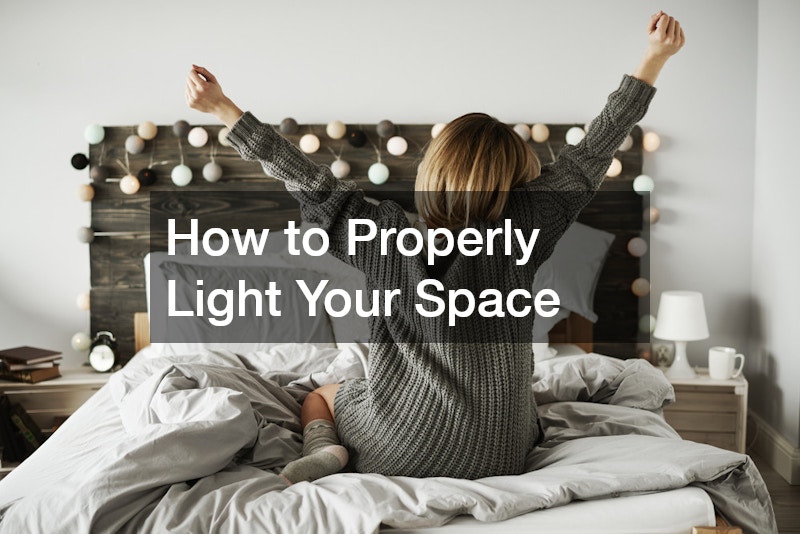Lighting is one of the most essential elements of interior design, yet it’s often overlooked. Proper lighting can transform any room, enhancing its functionality, mood, and aesthetic appeal. Whether you’re working with a small bedroom, an expansive living room, or a modern kitchen, understanding how to light your space effectively is key to creating a welcoming and well-balanced environment. With the right combination of fixtures and techniques, you can highlight architectural details, create ambiance, and ensure that your home feels warm and inviting.
In this blog, we’ll explore how to properly light your space using a variety of lighting techniques and fixtures, including ET2 Contemporary Lighting, known for its sleek and innovative designs.
1. Understand the Three Types of Lighting
To properly light your space, you need to start by understanding the three main types of lighting: ambient, task, and accent lighting. Each type serves a different purpose and should be layered together to create a well-rounded lighting scheme.
Ambient Lighting: Also known as general lighting, ambient lighting provides overall illumination to a room. This is the main source of light and ensures that the space is well-lit and safe to move around in. ET2 Contemporary Lighting offers a wide range of chandeliers, pendants, and flush-mount ceiling lights that can serve as ambient lighting while adding a modern aesthetic to your home.
Task Lighting: This type of lighting is focused on specific tasks, such as reading, cooking, or working. Task lighting should be brighter and more concentrated than ambient lighting. For instance, pendant lights over a kitchen island or desk lamps in a study provide focused illumination where it’s needed most. ET2 Contemporary Lighting’s sleek pendant lights and adjustable task lights are perfect for adding functionality without compromising style.
Accent Lighting: Accent lighting is used to highlight architectural features, artwork, or specific areas of a room. It’s often softer and more decorative than ambient or task lighting. Wall sconces, track lighting, and spotlights can be used to create visual interest and depth in a space. ET2 Contemporary Lighting’s innovative wall sconces and recessed lights can be used as accent lighting to add drama and style to any room.
2. Layer Your Lighting
One of the most important principles of lighting design is layering. A single overhead light won’t provide the depth or flexibility needed to properly illuminate a space. By layering different types of lighting—ambient, task, and accent—you can create a dynamic and versatile environment that works for any occasion.
For example, in a living room, you might use a combination of overhead ambient lighting (like a stylish chandelier from ET2 Contemporary Lighting), table lamps for task lighting, and wall sconces for accent lighting. This layered approach ensures that the space is well-lit while also creating a cozy and inviting atmosphere.
3. Choose the Right Light Bulbs
The type of light bulbs you choose can significantly affect the look and feel of your space. Light bulbs come in a variety of color temperatures, which are measured in Kelvins (K). Lower Kelvin numbers (around 2700K-3000K) produce a warm, yellow light, while higher numbers (5000K and above) produce a cool, blue light.
For most living spaces, warm white bulbs are ideal because they create a soft and inviting glow that is perfect for relaxation. In work areas like kitchens or home offices, you might opt for cooler, daylight bulbs to provide clear, focused light for tasks.
When choosing bulbs for your ET2 Contemporary Lighting fixtures, consider the color temperature and brightness that will work best for each space. For example, soft white bulbs work well in bedrooms and living rooms, while brighter, cooler bulbs may be more suitable for kitchens and bathrooms.
4. Consider the Room’s Function
Every room in your home serves a different purpose, and your lighting choices should reflect that. Think about how the space will be used and what kind of lighting is needed to support those activities.
Living Room: This is often a multifunctional space, so a combination of ambient and accent lighting works best. A statement piece, like a contemporary chandelier from ET2 Contemporary Lighting, can provide general lighting, while floor lamps or wall sconces offer accent lighting to create a cozy atmosphere.
Kitchen: In the kitchen, task lighting is crucial. Pendant lights over a kitchen island and under-cabinet lighting are excellent for providing focused illumination where you need it most. ET2 Contemporary Lighting offers stylish pendants that can double as both task and ambient lighting, making them a great choice for modern kitchens.
Bedroom: The bedroom should have a relaxing and peaceful vibe, so soft, warm lighting is key. Use bedside lamps for reading and wall sconces or recessed lighting for ambient illumination. Avoid overly bright lights in the bedroom, as they can make it harder to unwind.
Bathroom: In the bathroom, task lighting around the mirror is important for activities like shaving or applying makeup. Pair that with softer ambient lighting to create a relaxing atmosphere. ET2 Contemporary Lighting offers elegant, water-resistant options for bathroom lighting that add both style and function.
5. Use Dimmers for Flexibility
Dimmers are a great addition to any lighting design because they give you control over the brightness and mood of the room. Installing dimmer switches on your ambient and accent lighting allows you to adjust the light levels depending on the time of day, activity, or mood.
For instance, you can lower the brightness of your ET2 Contemporary Lighting chandelier in the dining room for a cozy, intimate dinner or brighten it for larger gatherings. Dimmers are an affordable and simple way to add flexibility to your lighting scheme.
.


